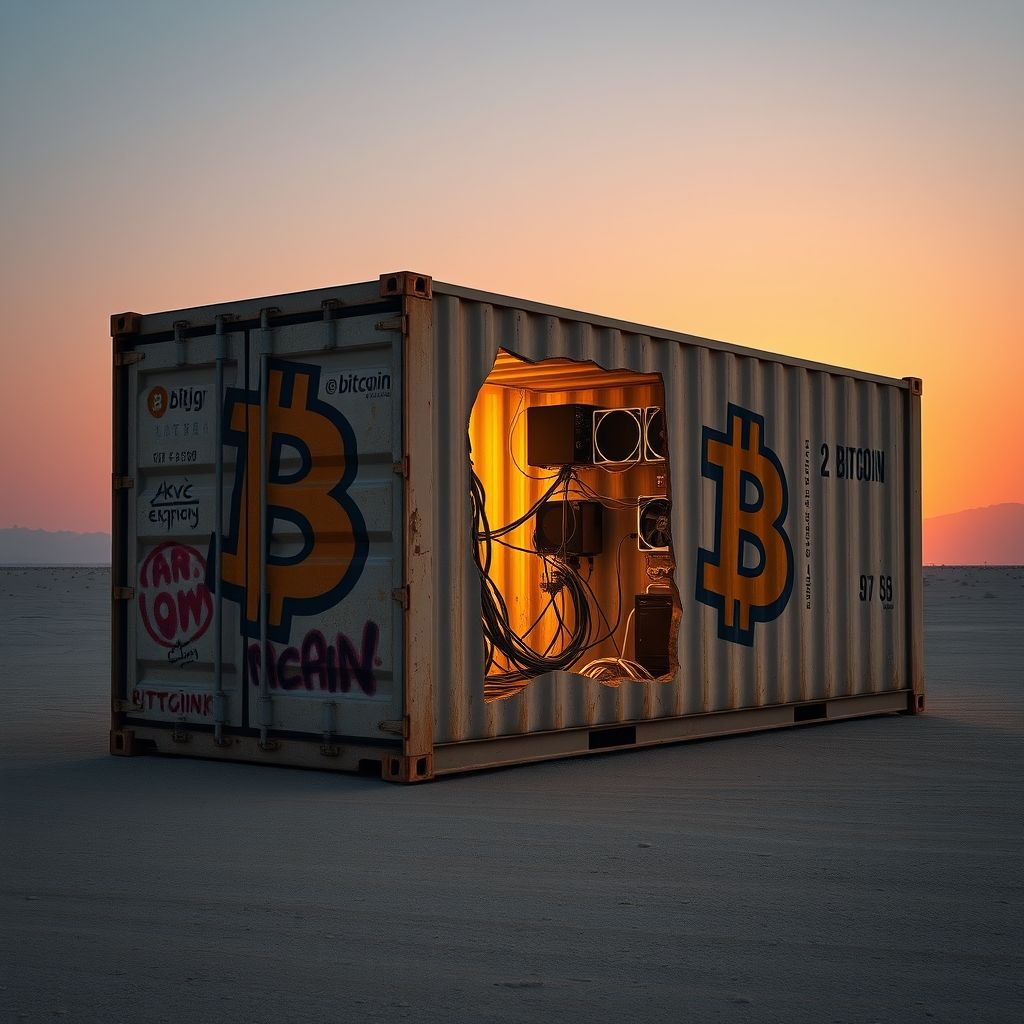Okay, so you know I’m always digging into the latest crypto stories, and this one? This one is wild. Imagine finding out your village’s power grid is being secretly drained… by a crypto mine inside a truck. Seriously. Russian authorities in Buryatia just busted a KamAZ truck packed with 95 mining rigs, all illegally tapping into the village’s electricity supply. Talk about a mobile mining operation!
We see headlines about crypto farms all the time, but usually, they’re in warehouses or abandoned factories. Sticking one in a truck and leeching power from a village? That’s a whole new level of resourcefulness (and, uh, illegality).
According to the Cambridge Centre for Alternative Finance, Russia was once a significant player in the Bitcoin mining world. As of early 2022, it accounted for around 11% of the global Bitcoin hashrate. While that number has likely shifted with geopolitical changes, it’s clear crypto mining is still a big deal there.
But with that popularity comes challenges. Cheap electricity is a huge draw for miners, and instances of illegal tapping are more common than you might think. In fact, in 2021, Irkutskenergo, a major energy provider in the Irkutsk region of Russia, estimated that illegal crypto mining consumed about 720 million kilowatt-hours of electricity annually. That’s enough to power a small city!
This truck-based bust highlights the pressures miners face to cut costs, and the lengths some will go to in order to do it. It also points to the strain crypto mining puts on local resources, and the creative (albeit unethical) solutions people are coming up with. It’s a reminder that while crypto can be innovative, it doesn’t exist in a vacuum, and can have real-world consequences for everyday people.
Here’s what I’m taking away from this story:
- Innovation (of sorts): The sheer audacity of a truck-based mining operation is… well, impressive in a strange way.
- Resourcefulness meets illegality: The incentive to save on electricity can lead to some pretty questionable choices.
- Community impact: Illegal mining directly affects the availability and cost of power for ordinary villagers.
- The hunt for cheap power: Crypto miners are constantly seeking affordable energy, driving some to break the rules.
- Regulation is key: This incident underscores the need for clearer regulations and oversight of crypto mining activities.
FAQs: Truck-Based Crypto Mine Edition
- What exactly is crypto mining? Crypto mining is the process of verifying and adding new transaction data to a blockchain. Miners solve complex mathematical problems to confirm transactions and are rewarded with cryptocurrency.
- Why is cheap electricity important for crypto mining? Mining requires a lot of computing power, which translates to high electricity consumption. Lower electricity costs increase profitability.
- Is crypto mining illegal in Russia? No, crypto mining is not explicitly illegal in Russia, but there is a regulatory gray area. Illegal connections to the power grid, as in this case, are definitely against the law.
- How much electricity does a crypto mine typically use? It varies greatly depending on the size of the operation. A large-scale mine can consume as much electricity as a small town.
- What are the environmental concerns associated with crypto mining? The high electricity consumption often relies on fossil fuels, contributing to carbon emissions.
- What is a “mining rig”? A mining rig is a computer system specifically built for crypto mining, usually consisting of multiple powerful graphics cards (GPUs).
- What’s a KamAZ truck? KamAZ is a Russian truck manufacturer. Their trucks are known for being rugged and durable, which is probably why it was chosen for this operation.
- What happens to the mining equipment when it’s seized? It depends on the jurisdiction. In some cases, the equipment is confiscated and auctioned off. In others, it may be destroyed.
- How can illegal crypto mining be prevented? Stricter regulations, monitoring of electricity consumption, and public awareness campaigns can help.
- Could something like this happen in Cameroon? Absolutely. Anywhere where there’s cheap electricity and a demand for crypto, the risk of illegal mining exists.


